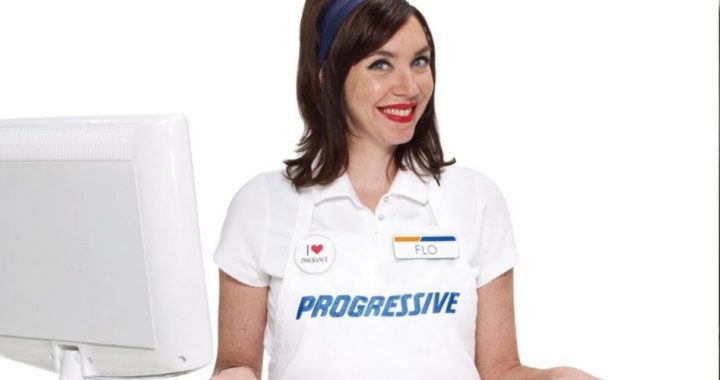
Is saving 30 percent on your car insurance enough to justify granting Big Brother access to your vehicle? That’s the question many consumers and industry analysts are asking, as more auto insurance companies offer new options that calculate premiums based on a person’s driving habits, rather than set variables such as age, gender, and past driving records.
Progressive insurance (the company with TV commercials starring “Flo,” left) for example, introduced last year its Snapshot Pay As You Drive discount program, which allows drivers to save up to 30 percent on their premiums. The catch is that all insured cars must be fitted with devices that monitor driving habits, such as how fast an individual drives, how often they apply the brakes, and how many miles they drive a week. If a driver has a long daily commute, for example, the discount might be reduced or eliminated altogether. According to Progressive this is how the Snapshot program works:
- After drivers sign up for the Snapshot program, we send them a device that fits in the palm of their hand and plugs into the on-board diagnostic (OBD) port of their car. The device records and sends the driving data to us.
- After 30 days, customers will find out if they’re eligible for a discount — up to 30 percent — based on their driving habits and will see that discount applied to their policy. People who drive less, in safer ways and during safer times of day are more likely to get a discount.
- At the end of the six-month policy term we determine the renewal discount and the customer returns the device to us.
- We may periodically check in with customers to get an updated picture of their driving by asking them to plug in the device again.
Most insurance plans determine premium rates based on dozens of set variables, such as age and gender, as well as other variable criteria like past driving experience. But the Snapshot insurance plan utilizes thousands of dynamic variables, including what time of day and at what speed a person normally drives their vehicle.
Richard Hutchinson, Progressive’s general manager of usage-based coverage, says the Snapshot algorithms analyze driving styles to predict the likelihood of accidents, along with how expensive an accident might be if one occurs. “Drivers who choose to drive less than average may be pre-disposed to a program like this,” Hutchinson affirmed. “This Program is still in its infancy, so we’re a long way from this being standard.”
Surprisingly, a new poll shows that the majority of drivers say they are willing to apply for such discounts, even if it means Big Brother watching over their shoulder. U.K.-based online insurance aggregator GoCompare.com reported that 92 percent of drivers believed insurance premiums should be calculated based on how they drive; and 97 percent asserted that good drivers should receive better rates.
While Progressive’s Snapshot system is an optional program, some critics worry that such programs will eventually become an industry standard, where insurance companies will require vehicle tracking systems for all policyholders. Most auto experts agree the method is not just a new trend, and that it’s likely here to stay.
Industry analyst Ed Kim says the pay-as-you-drive method is a growing trend in the technology world, and that many consumers are warming up to the idea, despite privacy concerns. “Americans consumers can be antsy about privacy, but in some ways are beginning to slowly accept companies tracking their whereabouts and habits,” Mr. Kim said.
Conversely, according Thilo Koslowski, an auto analyst with technology research firm Gartner, U.S. drivers are skeptical of such methods. Last year, for instance, Koslowski’s company administered a survey that showed only 10 percent of drivers would “definitely” apply for pay-as-you-go insurance on their next vehicle. Koslowski also expressed skepticism with the GoCompare.com survey, mainly because the U.K. has significantly higher insurance rates than the U.S., so U.K. drivers are more apt to sacrifice their privacy if it means getting their premiums reduced.
All in all, Koslowski says the largest obstacle will be the “Big Brother effect,” and new discussions will arise over whether pay-as-you-go is a step toward greater privacy issues. For example, he asserts, the next step could involve tracking drivers’ daily commuting routes and forcing them to take alternative, theoretically safer, routes.



